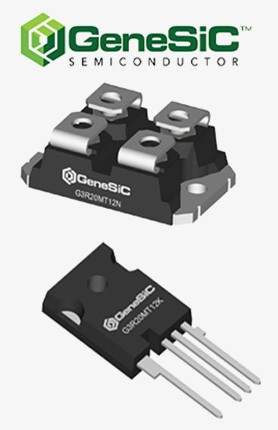-
BackX
-
Components
-
-
Category
-
Semiconductors
- Diodes
- Thyristors
-
Electro-insulated Modules
- Electro-insulated Modules | VISHAY (IR)
- Electro-insulated Modules | INFINEON (EUPEC)
- Electro-insulated Modules | Semikron
- Electro-insulated Modules | POWEREX
- Electro-insulated Modules | IXYS
- Electro-insulated Modules | POSEICO
- Electro-insulated Modules | ABB
- Electro-insulated Modules | TECHSEM
- Go to the subcategory
- Bridge Rectifiers
-
Transistors
- Transistors | GeneSiC
- SiC MOSFET Modules | Mitsubishi
- SiC MOSFET Modules | STARPOWER
- Module SiC MOSFET ABB’s
- IGBT Modules | MITSUBISHI
- Transistor Modules | MITSUBISHI
- MOSFET Modules | MITSUBISHI
- Transistor Modules | ABB
- IGBT Modules | POWEREX
- IGBT Modules | INFINEON (EUPEC)
- Silicon Carbide (SiC) semiconductor elements
- Go to the subcategory
- Gate Drivers
- Power Blocks
- Go to the subcategory
- Electrical Transducers
-
Passive components (capacitors, resistors, fuses, filters)
- Resistors
-
Fuses
- Miniature Fuses for electronic circuits - ABC & AGC Series
- Tubular Fast-acting Fuses
- Time-delay Fuse Links with GL/GG & AM characteristics
- Ultrafast Fuse Links
- Fast-acting Fuses (British & American standard)
- Fast-acting Fuses (European standard)
- Traction Fuses
- High-voltage Fuse Links
- Go to the subcategory
- Capacitors
- EMI Filters
- Supercapacitors
- Power surge protection
- TEMPEST emission revealing filters
- Surge arrester
- Go to the subcategory
-
Relays and Contactors
- Relays and Contactors - Theory
- 3-Phase AC Semiconductor Relays
- DC Semiconductor Relays
- Controllers, Control Systems and Accessories
- Soft Starters and Reversible Relays
- Electromechanical Relays
- Contactors
- Rotary Switches
-
Single-Phase AC Semiconductor Relays
- AC ONE PHASE RELAYS 1 series| D2425 | D2450
- One phase semiconductor AC relays CWA and CWD series
- One phase semiconductor AC relays CMRA and CMRD series
- One phase semiconductor AC relays - PS series
- Double and quadruple semiconductor AC relays - D24 D, TD24 Q, H12D48 D series
- One phase semiconductor relays - gn series
- Ckr series single phase solid state relays
- One phase AC semiconductor relays for DIN bus - ERDA I ERAA series
- 150A AC single phase relays
- Rail Mountable Solid State Relays With Integrated Heat Sink - ENDA, ERDA1 / ERAA1 series
- Go to the subcategory
- Single-Phase AC Semiconductor Relays for PCBs
- Interface Relays
- Go to the subcategory
- Cores and Other Inductive Components
- Heatsinks, Varistors, Thermal Protection
- Fans
- Air Conditioning, Accessories for Electrical Cabinets, Coolers
-
Batteries, Chargers, Buffer Power Supplies and Inverters
- Batteries, Chargers - Theoretical Description
- Modular Li-ion Battery Building Blocks, Custom Batteries, BMS
- Batteries
- Battery Chargers and Accessories
- Uninterruptible Power Supply and Buffer Power Supplies
- Inverters and Photovoltaic Equipments
- Energy storage
- Fuel cells
- Lithium-ion batteries
- Go to the subcategory
-
Automatics
- Spiralift Lifts
- Futaba Drone Parts
- Limit Switches, Microswitches
- Sensors, Transducers
-
Infrared Thermometers (Pyrometers)
- IR-TE Series - Water-proof Palm-sized Radiation Thermometer
- IR-TA Series - Handheld Type Radiation Thermometer
- IR-H Series - Handheld Type Radiation Thermometer
- IR-BA Series - High-speed Compact Radiation Thermometer
- IR-FA Series - Fiber Optic Radiation Thermometer
- IR-BZ Series - Compact Infrared Thermometers
- Go to the subcategory
- Counters, Time Relays, Panel Meters
- Industrial Protection Devices
- Light and Sound Signalling
- Thermographic Camera
- LED Displays
- Control Equipments
- Go to the subcategory
-
Cables, Litz wires, Conduits, Flexible connections
- Wires
- Cable feedthroughs and couplers
- Litz wires
- Cables for extreme applications
- Sleevings
-
Braids
- Flat Braids
- Round Braids
- Very Flexible Flat Braids
- Very Flexible Round Braids
- Cylindrical Cooper Braids
- Cylindrical Cooper Braids and Sleevings
- Flexible Earthing Connections
- Galvanized and Stainless Steel Cylindrical Braids
- PCV Insulated Copper Braids (temp. up to 85C)
- Flat Aluminium Braids
- Junction Set - Braids and Tubes
- Go to the subcategory
- Traction Equipment
- Cable Terminals
- Flexible Insulated Busbars
- Flexible Multilayer Busbars
- Cable Duct Systems
- Go to the subcategory
- View all categories
-
Semiconductors
-
-
- Suppliers
-
Applications
- CNC Machine Tools
- DC and AC Drives (Inverters)
- Energetics
- Energy bank
- Equipment and Components for Hazardous Areas [Ex]
- Equipment for Distribution, Control and Telecommunications Cabinets
- HVAC Automation
- Induction Heating
- Industrial Automation
- Industrial Protective Devices
- Machines for Drying and Wood Processing
- Machines for Thermoforming Plastics
- Mining, Metallurgy and Foundry
- Motors and Transformers
- Power Supplies (UPS) and Rectifier Systems
- Printing
- Temperature Measurement and Regulation
- Test and Laboratory Measurements
- Tram and Railway Traction
- Welding Machines
-
Assembly
-
-
Inductors
-
-
Induction devices
-
-
Service
-
- Contact
- Zobacz wszystkie kategorie
Ceramic tapes and substrates
Ceramic Tapes and Substrates: Innovative Solutions for Thermal Management
With the miniaturization and increase in power of electronic devices, the problem of effective Heat Dissipation has become one of the greatest engineering challenges. Excessive temperature shortens component...
Ceramic Tapes and Substrates: Innovative Solutions for Thermal Management
With the miniaturization and increase in...
| Image | View the product | No. Manufacturer | ||||
|---|---|---|---|---|---|---|
| picture_as_pdf |
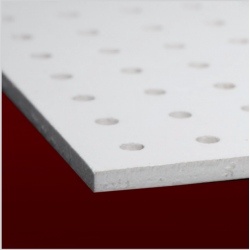
|
Kerafol | Keralpor 99 | SEE IT | -- | On Order |
| picture_as_pdf |
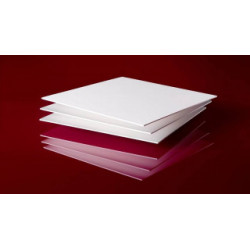
|
Kerafol | Keralpor S | SEE IT | -- | On Order |
| picture_as_pdf |

|
Kerafol | 3YSZ - Sensor | SEE IT | -- | On Order |
| picture_as_pdf |

|
Kerafol | ATS | SEE IT | -- | On Order |
| picture_as_pdf |

|
Kerafol | Keral 99 TF | SEE IT | -- | On Order |
| picture_as_pdf |
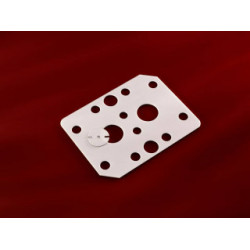
|
Kerafol | Keral 96 | SEE IT | -- | On Order |
| picture_as_pdf |
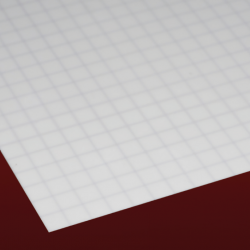
|
Kerafol | Keral 99 | SEE IT | -- | On Order |
| picture_as_pdf |

|
Kerafol | Keraprotec | SEE IT | -- | On Order |
Ceramic Tapes and Substrates: Innovative Solutions for Thermal Management
With the miniaturization and increase in power of electronic devices, the problem of effective Heat Dissipation has become one of the greatest engineering challenges. Excessive temperature shortens component lifespan, reduces efficiency, and in extreme cases leads to failure. Ceramic Tapes and Ceramic Substrates constitute an advanced technological solution that, thanks to its unique thermal and electrical properties, is essential in modern thermal management systems, especially in high-power electronics.
Ceramic Substrates: Stability and High Thermal Conductivity
Ceramic Substrates, often made of aluminum oxide ($Al_2O_3$), aluminum nitride ($AlN$), or beryllium oxide ($BeO$), are a key structural element in power modules, high-brightness LED diodes, and high-power integrated circuits. Their main advantage is the combination of **excellent electrical insulation** with **very good thermal conductivity**. This unique combination allows for direct mounting of semiconductor elements onto the substrate (e.g., in DBC – Direct Bonded Copper technology), effectively Dissipating Heat from the hot spot to the heat sink, while ensuring the required electrical separation. These substrates are also characterized by high dimensional stability and resistance to extreme temperature and chemical conditions.
Ceramic Tapes: Flexibility in Thermal Insulation
Ceramic Tapes, in contrast to rigid substrates, offer greater flexibility in application, serving as thermal interfaces or insulators. They are used for electrical separation of hot components, such as power transistors or thyristors, from their cooling heat sinks. They ensure effective Heat Dissipation while maintaining electrical insulation, often as an alternative to traditional mica or silicone pads. Thanks to their structure, Ceramic Tapes can be cut and adapted to irregular surfaces, which facilitates assembly in complex systems. The materials used for their production, such as ceramic mica composites, guarantee long-term thermal and electrical stability.
Application in Practice: Heat Dissipation in Critical Applications
Both Ceramic Substrates and Ceramic Tapes are essential in sectors where reliability and heat management are critical. This includes the automotive industry (e.g., in electric vehicle inverters), power engineering (IGBT modules in wind farms and PV systems), as well as telecommunications and military applications. Thanks to their ability to operate at high temperatures and effective Heat Dissipation, ceramic solutions contribute to increasing power density and device reliability. The choice between a substrate and a tape depends on specific design requirements, such as the required mechanical rigidity, the level of thermal conductivity, and the necessary thickness of electrical insulation.

